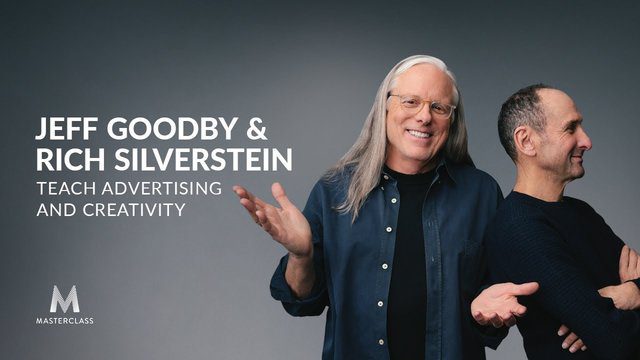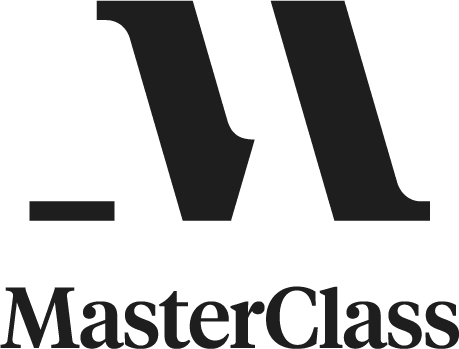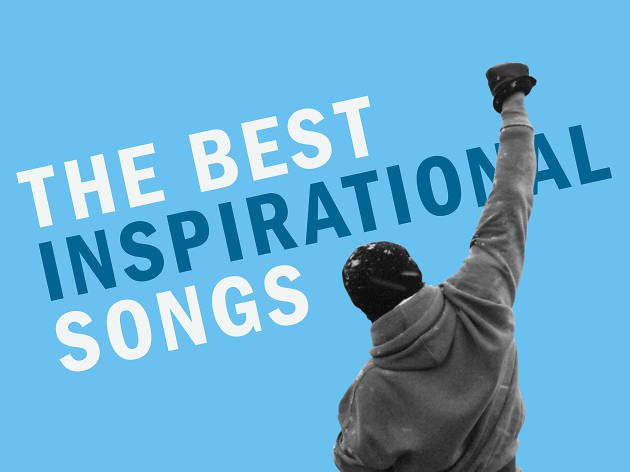Jeff Goodby and Rich Silverstein started Goodby Silverstein & Partners (GS&P) with Andy Berlin in 1983 and won their first award from the Cannes Lions International Festival of Creativity for the Mill Valley Film Festival. Jeff and Rich went on to win Lions across every award and brand category, bridging an unprecedented variety of styles. Their work has included advertising campaigns like “got milk?,” the Budweiser lizards, Hewlett-Packard’s “Invent,” the E*Trade chimpanzee, Polaroid’s “See what develops,” the NBA’s “I love this game,” Nike’s “Skateboarding,” and SEGA’s “SEGA!
Since 2000, GS&P has excelled at creating work that transcends media. In 2019, Jeff and Rich were honored with the Cannes Lion of St. Mark—the organization’s Lifetime Achievement Award. Most recently the agency received Cannes Lions for “Lessons in Herstory” (an AR project that rewrites history to include women), “Dalí Lives” (a deepfake experience that brings Salvador Dalí back to life), “I Am a Witness” (the first emoji for a social cause), the “Dreams of Dalí” VR experience, Chevrolet’s Chevy Sonic launch with the rock band OK Go, and the Cheetos Museum.
Nobody reads advertising. People read what interests them, and sometimes it’s an ad. – Howard Gossage
Here are my favorite takeaways from viewing
Jeff and Rich have been named Adweek’s “Executives of the Decade,” and their effect on advertising can be particularly felt in the leaders they have created and mentored, many of whom have successfully started their own agencies. GS&P creative alumni include Fred Raillard and Farid Mokart (founders of Fred & Farid), Paul Venables (founder of Venables Bell & Partners), Jamie Barrett (founder of barrettsf), and leaders like Chris Beresford-Hill (CCO, TBWA\Chiat\Day New York), Gerry Graf (founder of Barton F. Graf), Steve Simpson (CCO, PayPal Creative Lab), and Karen Onsager-Birch (CCO, Foote, Cone & Belding West). Jeff grew up in Rhode Island and graduated from Harvard University, where he wrote for The Harvard Lampoon. He worked as a newspaper reporter in Boston, and his illustrations have been published in Time and Mother Jones. He began his advertising career at J. Walter Thompson before moving to Ogilvy & Mather, where he met his mentor, Hal Riney. It was with Riney that Jeff learned his reverence for surprise, humor, craft, and restraint. He also met a guy named Rich Silverstein at Ogilvy & Mather. Rich grew up in Yorktown Heights, New York. After graduating from the Parsons School of Design in New York City, he moved to San Francisco against his father’s wishes. He worked as an art director in one-year increments for Rolling Stone; Bozell & Jacobs; McCann Erickson; Foote, Cone & Belding; and Ogilvy & Mather, where he met Jeff and finally settled down. Since doing so, the pair have won just about every advertising award imaginable. The consumer isn’t a moron; she is your wife. You insult her intelligence if you assume that a mere slogan and a few vapid adjectives will persuade her to buy anything. She wants all the information you can give her. – David Ogilvy What is Advertising? In the largest sense, Jeff says, “advertising is massive, long term, corporately-funded research into what we love, what we think is funny, what we find beautiful.” And in the current media environment—one in which you can switch things off, change the channel, or navigate to another website—advertising has to be something that interests you and maybe even be something you want to share. “Like architecture,” Jeff says, “a lot of advertising is hard to ignore. It comes at you in public and private spaces. The makers of it all have a moral obligation to create things that are provocative, memorable, even uplifting.” Like architecture, lot of advertising is hard to ignore Roles at an Ad Agency THE CREATIVES These are the people you typically think about when you think of the meat and potatoes of an advertisement. They are the ones tasked with coming up with creative ideas who then follow the ideas through to completion by ensuring they sound smart, look good, and convey a concept. Within the creative department, you’ll typically see the following roles: THE STRATEGY DEPARTMENT Strategists use a combination of quantitative and qualitative information to help create the insights—focus groups, in-field market research, internet sleuthing—and sometimes they create a road map for the media itself, identifying where the completed video, banner ad THE PRODUCTION DEPARTMENT Once an idea has been approved, the production department is in charge of bringing it to life by literally assembling the pieces needed to create it (whether that’s scheduling a photo shoot for a print campaign or booking talent for a commercial). THE ACCOUNT TEAM The account team is the direct liaison between the ad agency and the brand or client. It’s a crucial part of keeping the lines of communication with clients open and sometimes even protects the agency from over (or under) involvement from the brand in order to not only protect the client but the work itself. THE INSIGHT, THE IDEA, AND THE EXECUTION The insight sets the foundation for the idea. The execution turns the idea into an advertisement. Sometimes the idea is the insight. Sometimes the idea is the execution. The How, The What & The Why The How, The What The Why The Best Solution Isn’t Always Complicated The genesis of the tagline “got milk?”—now one of the most famous taglines of all time—is pretty unremarkable. Jeff suggested it as a placeholder for the pitch presentation, and it just stuck. The first lesson here is that the best solution isn’t always the most complicated one. The tagline’s success stems from its colloquial nature. And because it was rife with so much punchy personality, it was clear to Jeff and Rich that it needed an equally punchy aesthetic sensibility. That’s where Rich came in with the typographic treatment. This campaign is one example of a very successful relationship between copy and art direction. Good Ideas Can Come From Anywhere When working in advertising as a creative, it’s your job to come up with good ideas that solve business problems. But don’t fall into the trap of thinking that ideas are your responsibility exclusively. Instead, think of your job as maximizing the potential of any idea, whether it was your idea or not. This might mean taking a verbal insight from a client and turning it into something creative. As an advertising creative, you need to always be on what Jeff and Rich call “the listening side” of life, meaning you actively look for inspiration in any and all scenarios. Working with Brands The company is the entity that produces the product or service that then generates the revenue. It’s transactional, literal, and taxable. The brand, on the other hand, is the personality of that company. It’s the thing that we use to identify and explain to ourselves the value system behind the physical entity itself. You are a Brand Whether you have tattoos, wear thick black glasses, or rep that Death Cab for Cutie 2003 tour shirt, you’re telling people something about your value system. You present yourself as someone worth investing into those specific people who share that brand identity. The more you can think about your own brand as a communication device, the easier it will be to consider a company’s brand in the same way. MasterClass is a streaming platform that makes it possible for anyone to learn from the very best. MasterClass is an online membership – accessible on your phone, web, Apple TV, Roku devices, and Amazon Fire TV – that offers classes on a wide variety of topics taught by 85+ world-class masters at the top of their fields. Their immersive learning experiences combine incredible video content, downloadable materials, and social interaction with the MasterClass community, all of which users can explore at their own pace. The annual membership is available for $180 USD, which allows unlimited access to ALL on demand MasterClass content for the year Goodby & Silverstein Teach Advertising and Creativity Give One Annual Membership. Get One Free. All the best in your quest to get better. Don’t Settle: Live with Passion. For More Information: MasterClass Home Page
People who generate the words for audio scripts, ad slogans, and any other text that appears on or with advertising visuals.
People who set the visual tone for— and ultimately direct—all visual aspects of an ad campaign for the client.
The leaders of the creative department. People who manage the visual and narrative aspects of creative campaigns and make sure that all assets ultimately align with a greater brand message that is being conveyed.
People who assist the art directors and copywriters by designing the materials for an ad campaign. Some help craft the visual concept of the campaign; some stay focused on the end product.
The strategy department, which is primarily responsible for helping craft the insight and the roadmap to the creation of the idea. The strategist’s job is to help identify a human truth that creatives can then use to craft an idea that resonates with real human behavior.
Whatever you make to physically communicate the idea.
Turning the insigh into an action. Not where it goes but where it COULD go. “What if we …?”
The Universal Truth. The Cultural Tension. The Reason.





Comments are closed.